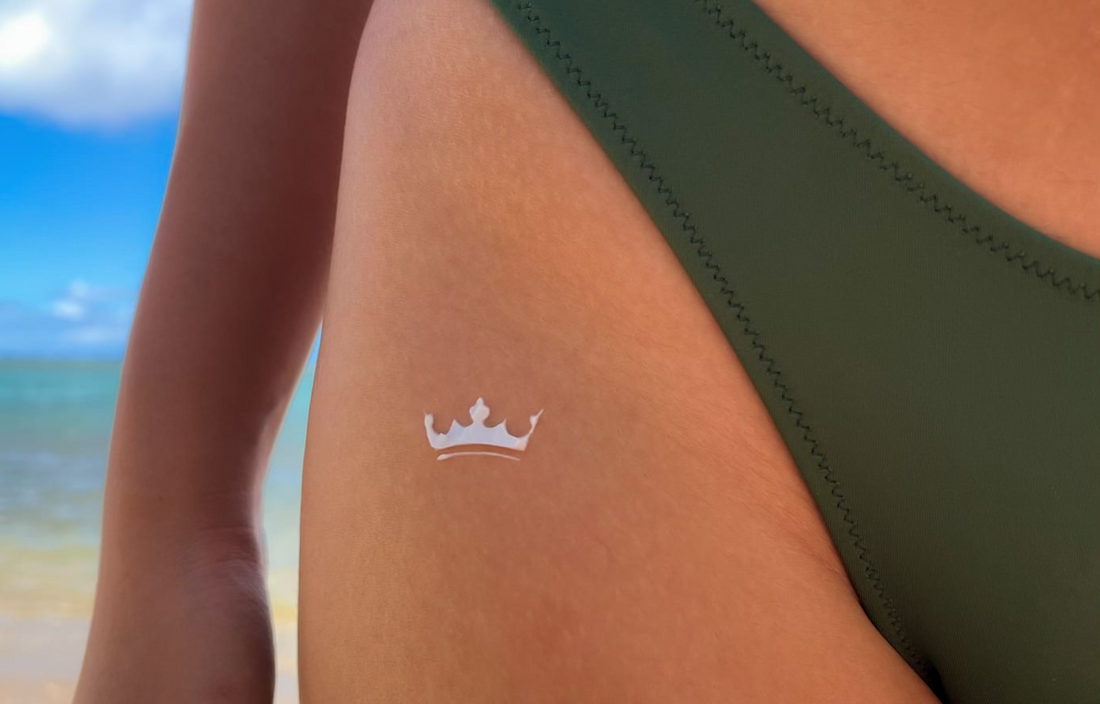
Protect yourself this summer: how to stay safe from UV rays
Share
Summer's here and we can't wait to sunbathe in our favorite Sharai bikinis! We love the sunny weather but it's super important to remember to keep our skin protected. According to the American Academy of Dermatology Association, skin cancer is the most common form of cancer in the United States - it is estimated one in five Americans will develop it in their lifetime. Don't be scared to enjoy the sun though! Remember that skin cancer is also the most preventable form of cancer as long as you take the right precautions. From sunscreens to hats, here's all of our tips to stay safe in the sun all summer long.
Ingredients You Should Avoid
Did you know some sunscreens contain chemicals that are super harmful to your body and aquatic life like coral reefs? Here's what you should look for in a sunscreen to care for the environment and your skin!
Oxybenzone
What to look for on the label:
benzophenone-3 and sometimes Milestab 9, Eusolex 4360, Escalol 567, or KAHSCREEN BZ-3
This ingredient is a form of synthetic estrogen according to the Environmental Working Group can cause disruptions in your hormones when it penetrates your skin. It's also been shown to cause harm to coral reefs which is why it's been banned in Hawai'i.
Octinoxate
What to look for on the label:
Octinoxate,o methoxycinnamate (OMC), parsol, parsol MCX, parsol MOX, escalol, 2-ethylhexyl p-methoxycinnamate
This UV filter is also banned in Hawai'i because of its harm to the coral reefs. It's also shown to cause skin allergies and disrupt thyroid function.
For more information about these ingredients and more check out this article by the Environmental Working Group.
Our Sunscreen Recommendation

Bask Sunscreen
Bask Sunscreen is available in both 30 and 50 SPF version with a lotion and spray option. We love Bask because they're antioxidant rich, cruelty free, Hawaii-Reef friendly, paraben and sulfate free, and 100% vegan! Their spray is non-aerosol meaning the harsh chemicals released in traditional spray sunscreens are no problem at all. Click here to shop or learn more about Bask, plus use code FEELGOOD for 10% OFF your first purchase!
Disclaimer: using this link for Bask Suncare will give Sharai, LLC a small commission from sales.
Suncreen Dos and Do Nots
So you finally picked a skin-safe and eco-friendly sunscreen. Now what? Here's some tips to get the best coverage to keep your skin protected through the sunniest days.
Don't fall for high SPF labels
When used correctly sunscreen between 30 and 50 offers enough protection even for those with sensitive skin. It's easy to assume the higher the SPF label the more protection you get. The Environmental Working Group states, when properly applied though, SPF 50 blocks 98 percent of UVB rays while SPF 100 blocks 99 percent. High SPF products also require higher concentrations of chemicals which can pose health risks when they penetrate the skin.
Reapplying is key
Choosing a sunscreen with higher SPF labels can tempt you to stay in the sun for too long. Reapplying is very important, especially when you are near water, at higher elevation, or sweating a lot. Even if you don't get burned you skin can still be damaged. According to the United States Environmental Protection Agency, UV Rays are strongest from 10AM-3PM so be sure to be extra careful around this time of day.
Don't combine with bug repellent
If you need bug repellent apply it after sunscreen. Do not purchase products that advertise two-in-one. Sunscreen formulas decrease in their ability to screen out ultraviolet radiation by more than 30 percent in some studies. According to the Skin Cancer Foundation, sunscreens also enhance absorption of DEET, the most effective and common bug repellent, into the skin potentially increasing toxicity, especially for children.
Apply even when its cloudy
Yes, you read that right. You should apply sunscreen everyday to exposed skin, even if it's not super sunny. UV Rays can penetrate clouds and even the slightest exposure can cause sun damage.

Other ways to protect yourself from the sun
So you've learned which chemicals in sunscreen to avoid, the dos and don'ts of applying, and some recommended options. Now what?
There's still plenty of steps you can take to protect yourself to stay extra safe this summer. Plus, these options are super cute!
Wear sunglasses that filter UV Light
Sunglasses aren't just a must-have summer accessory! They're a great way to protect your eyes from the sun's harsh rays as well. Look out for sunglasses that provide UV400 protection such as these. This rating ensures that light waves (both UVA and UVB) up to 400 nanometers are blocked out, protecting your eyes from 99 to 100 percent of UV light!
Cover your head

Hats are another great option to protect your face from the sun! Did you know your scalp can get burned just like any other part of your skin? Keep your head safe by covering it with a cute hat this summer like our bucket hats or our satin-lined dad caps for some extra hair protection.
